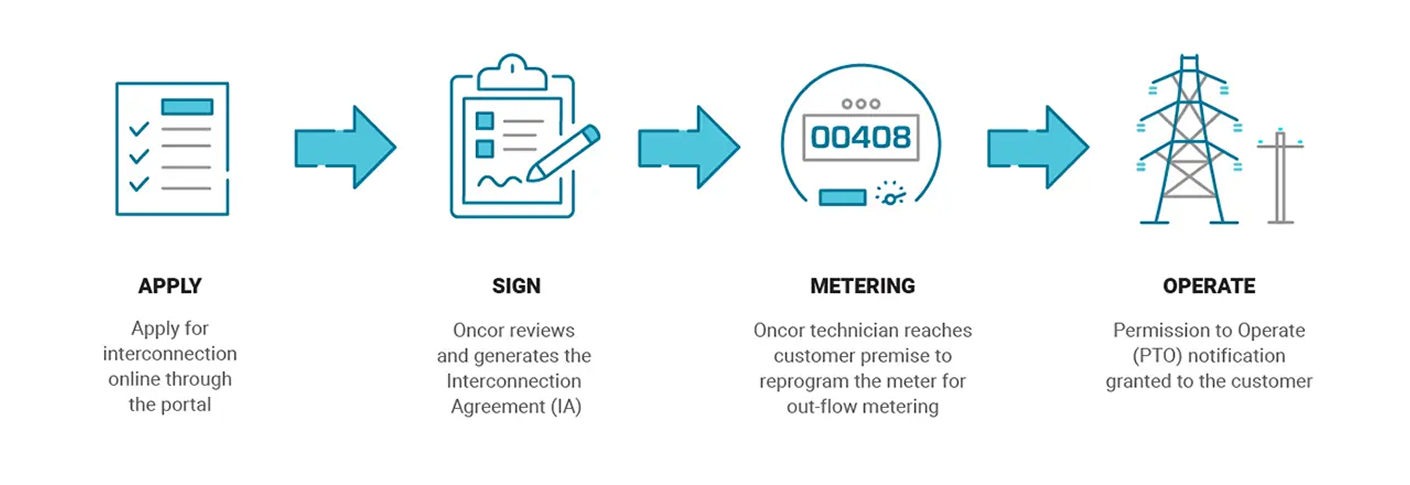Once you've selected an installer, they will communicate with Oncor, file an application for either a certified residential system or certified small commercial system, and begin the interconnection process. The time frame for installation can range from a few days to several months.
Oncor will review your application, perform a study to ensure a safe and reliable interconnection to the grid, and prepare an interconnection agreement to be signed by all authorized parties. Once Oncor provides permission to operate, meter information—including information about any surplus generation—will be provided to retail electric providers with the first full billing cycle (30-60 days). An advanced meter is required to measure surplus generation sent to the grid.










